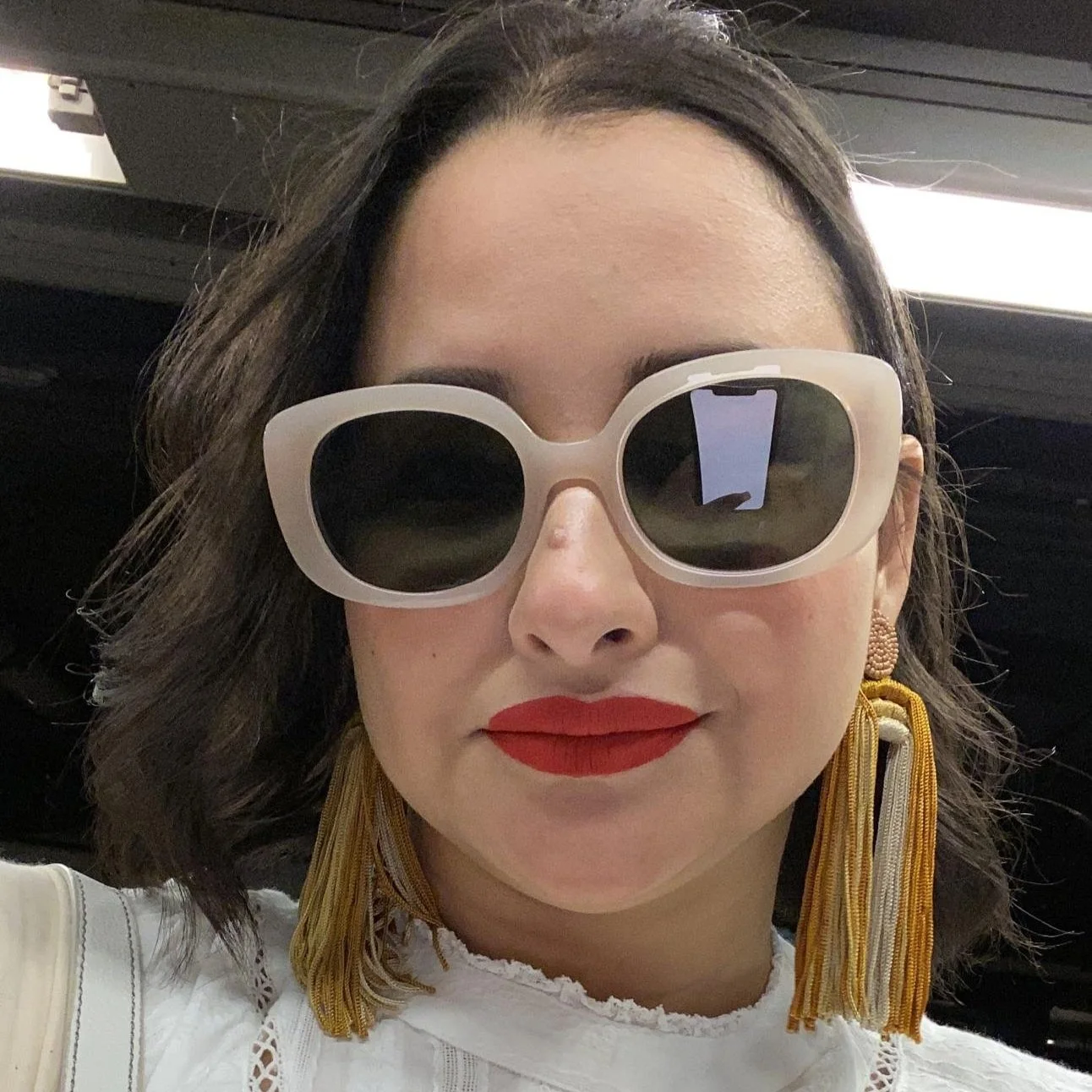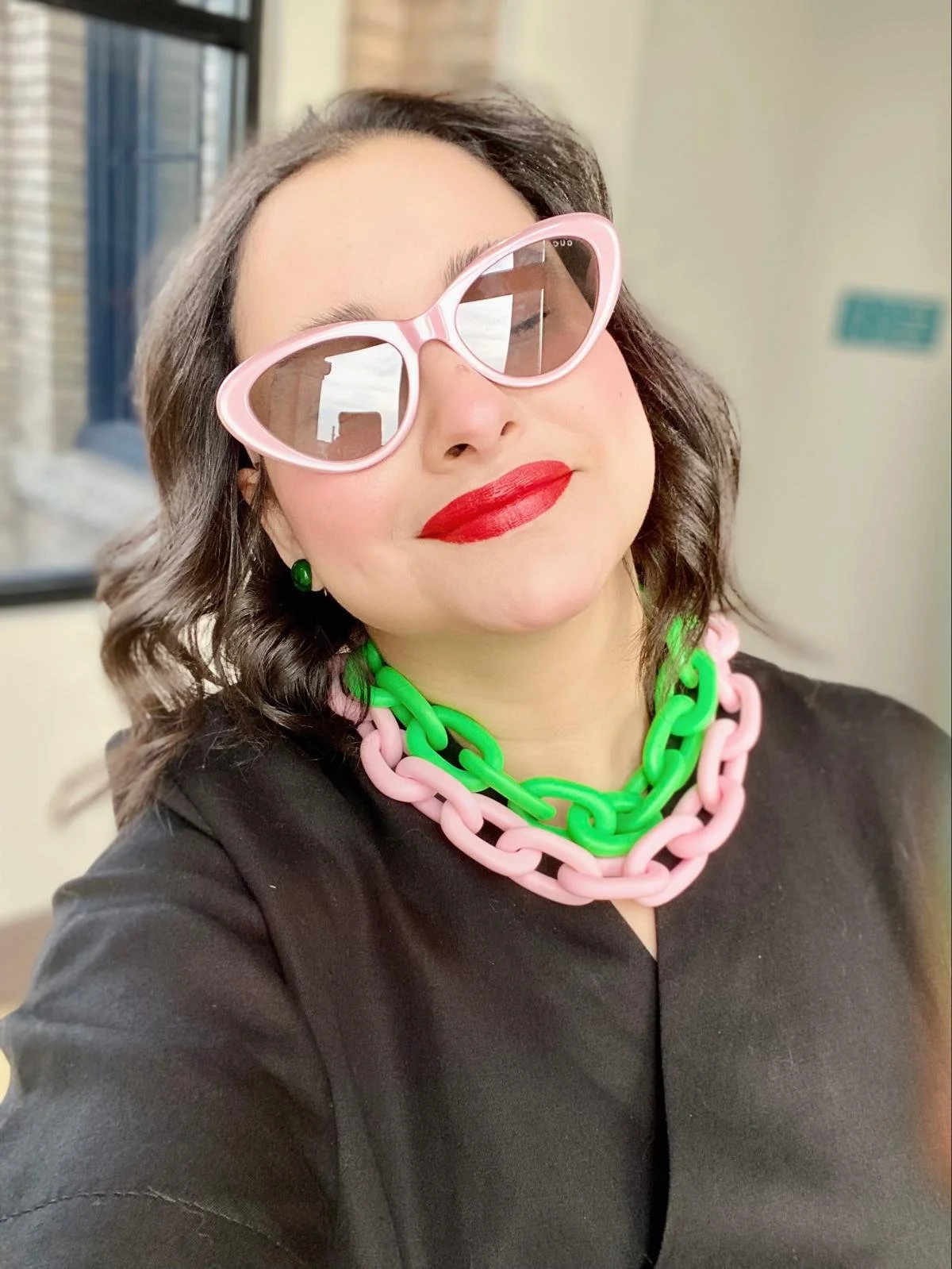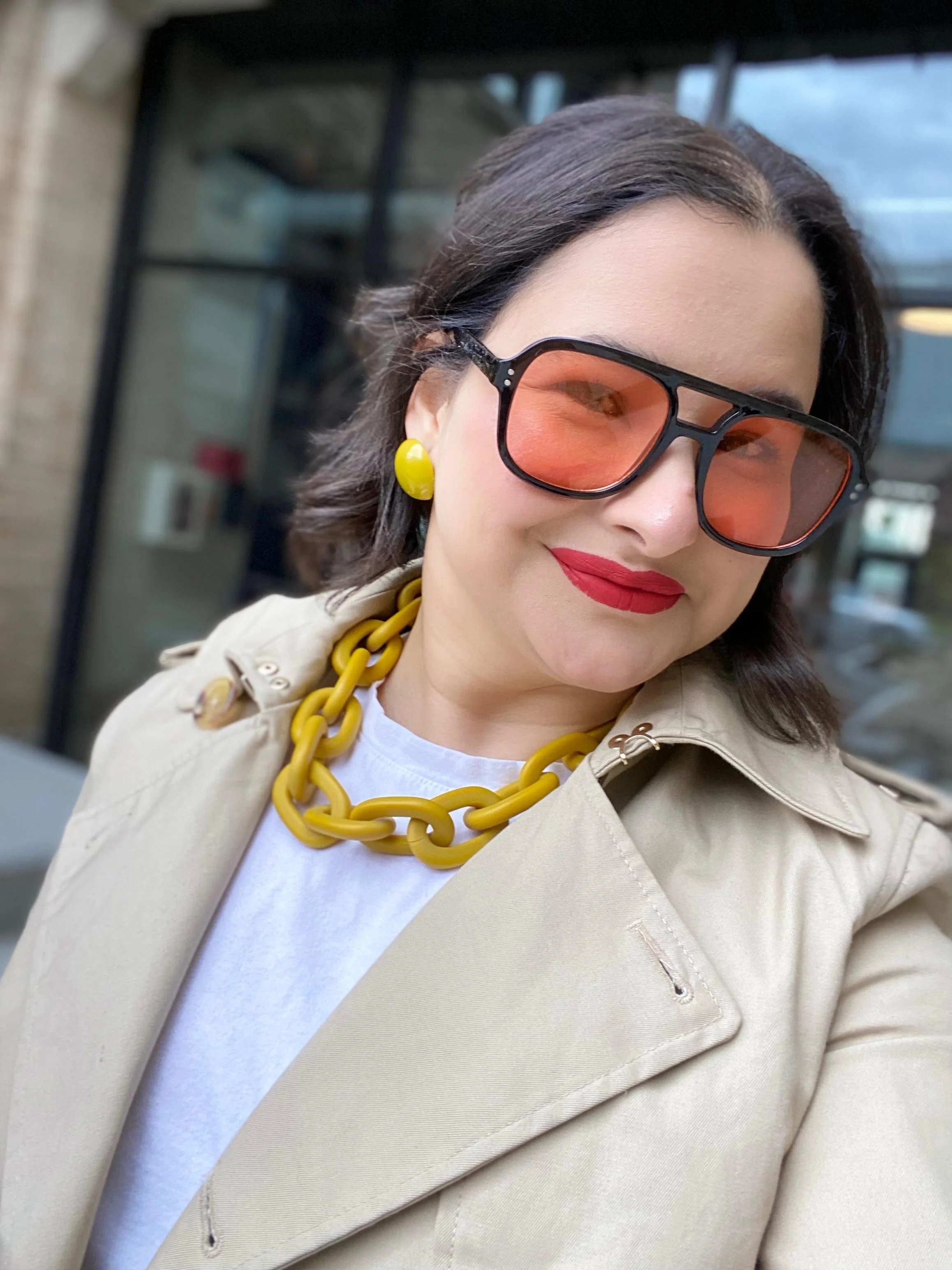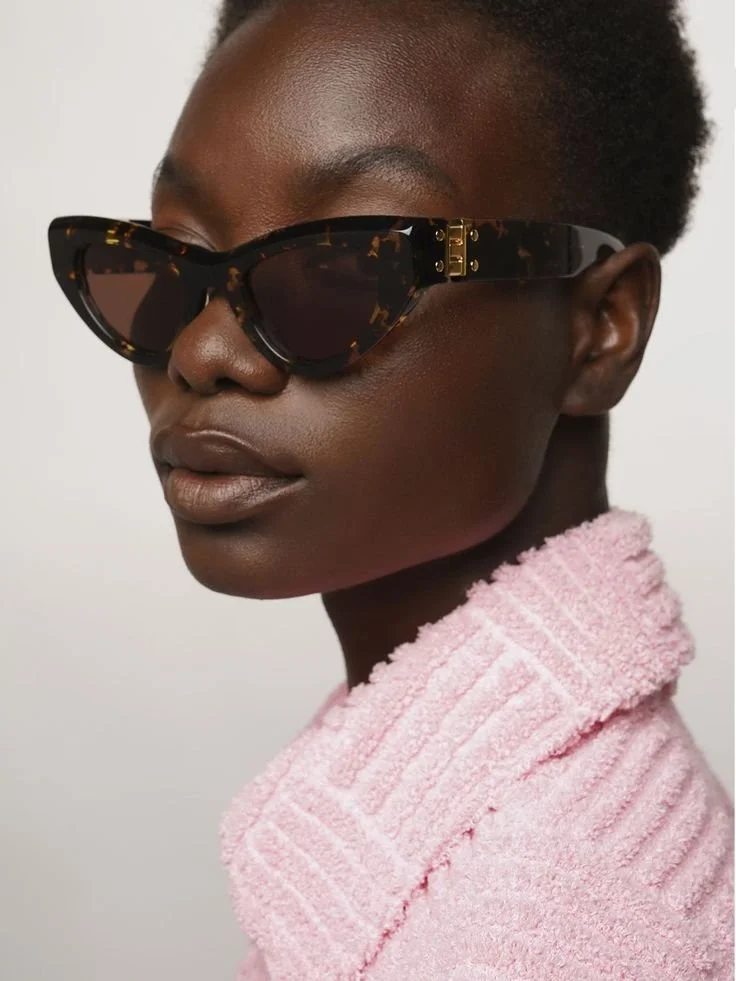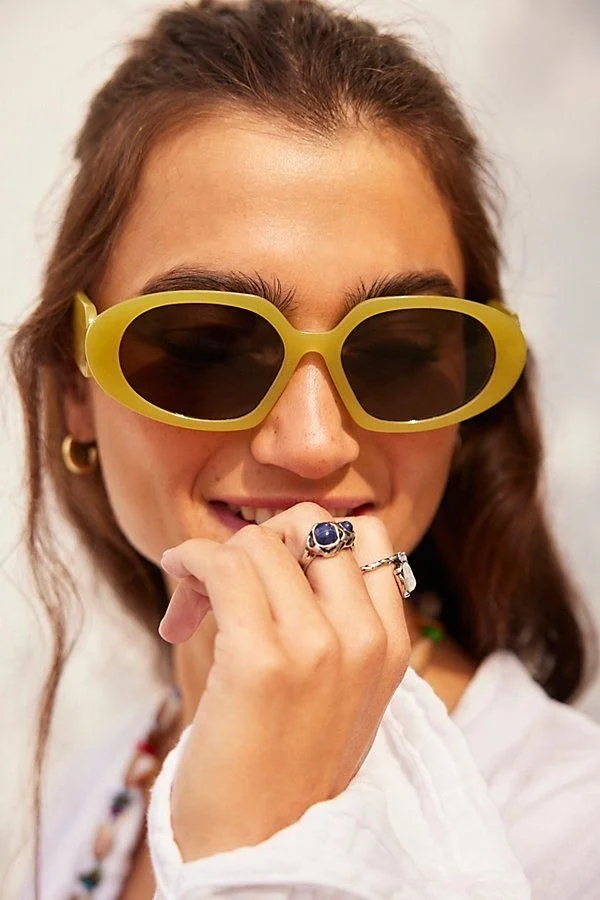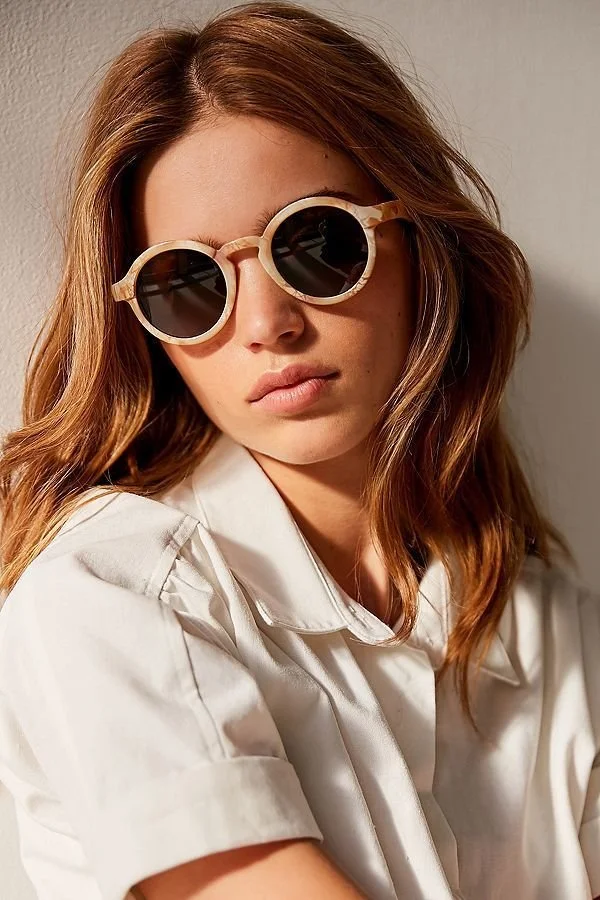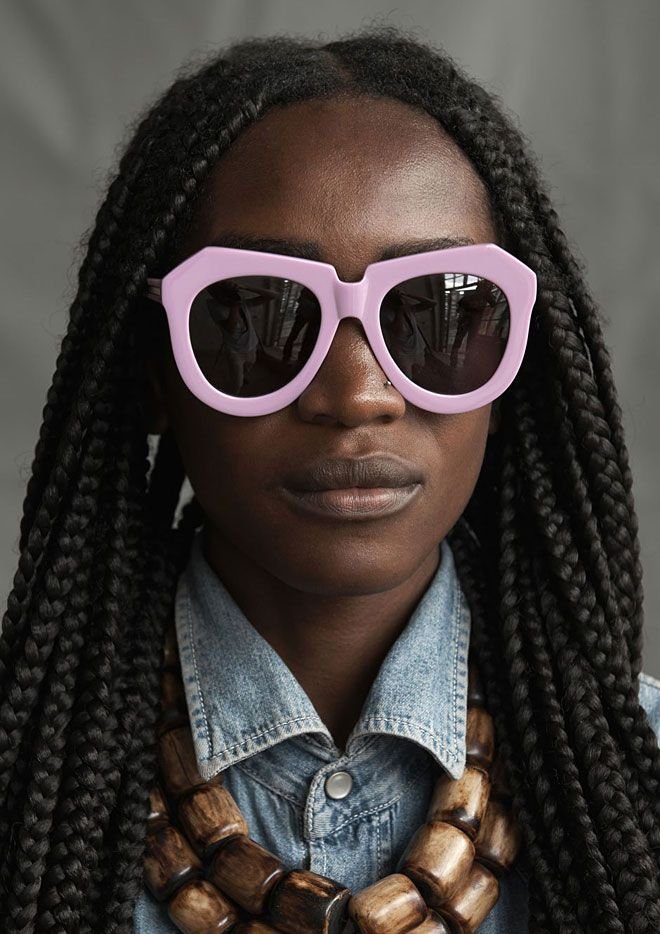Eyewear Guide
I’m so excited to be writing this blog post because we are talking about one of my favorite things: eyewear! Picking out eyewear can be challenging, especially since they will be on your face most of the time. A pair of eyewear can make you look happy, sad, or can drown your vivacity. I’ve put together some easy steps to help you feel more confident when choosing everyday prescription glasses, go-to sunglasses, and even some statement eyewear pieces!
Consider your color contrast
If you’ve had a color analysis done (which I recommend if you’re unsure about your eyeglasses), you’ll know how your natural colors work together. Glasses should blend into your natural look. This comes from the principle of harmony. For example, you wouldn’t frame a beautiful, soft, sunny beach photo with a black and neon pink polka dot frame, right?
This is the basic principle of harmony. By understanding the contrast between your eyes, skin, hair, and eyebrows, you can pick glasses that create harmony.
Color
Color is very important. If you know your color palette, it makes your choice easier. You’ll know your best neutrals, metals, and finishes (like muted, bright, aged, soft). If you don’t know your colors, try matching your glasses with colors already in your hair, eyebrows, or eyes.
Let’s talk about shape
Here are some important things to keep in mind about shape:
First, do you want harmony or contrast?
Understanding contrast is important. Sometimes we want to stand out, so it’s okay to choose glasses that bring contrast if that’s what you’re looking for.
For harmony, match the shape of your glasses with your facial features. If you have round features (like almond eyes, rounded lips, and cheeks), round glasses will blend well. For contrast, choose glasses with sharp edges and straight lines. If you have sharp features (like a pronounced jaw or pointed chin), square or sharp-lined glasses will blend well, while round shapes give you contrast and make you seem more approachable.
Your glasses are a form of self-expression, so don't be afraid to try new styles and possibilities!
Here are some examples of harmony (images from Pinterest):
Here are some examples of contrast (images from Pinterest):
You don’t always have to be in harmony, but it’s important to know what are the things that blend and bring natural harmony to your landscape. It’s also important to know what makes you stand out and what creates contrast to your natural landscape. That way, you can make decisions based on your goal of contrast or harmony.
Fit of glasses
Your glasses should fit well. When you smile, they shouldn’t move. There should be a small gap between your cheeks and the glasses. They should also sit comfortably on your nose—not too tight where they sit too high, or too loose where they’re always sliding down. You should have at least a finger’s width between the outer edge of the glasses and your face so they are not too narrow or too wide.
How much money should you invest?
I recommend investing most of your budget in your go-to, everyday pair of glasses that blend well with most of your wardrobe. For statement glasses, which you might not wear every day, spend less unless you plan to wear them frequently to express your creativity or personality. For example, my favorite statement sunglasses are worth the investment because I wear them all summer.
If you enjoyed these tips, let me know in the comments if you’d like me to create a catalog of my favorite glasses brands and more examples of what we’ve discussed!


